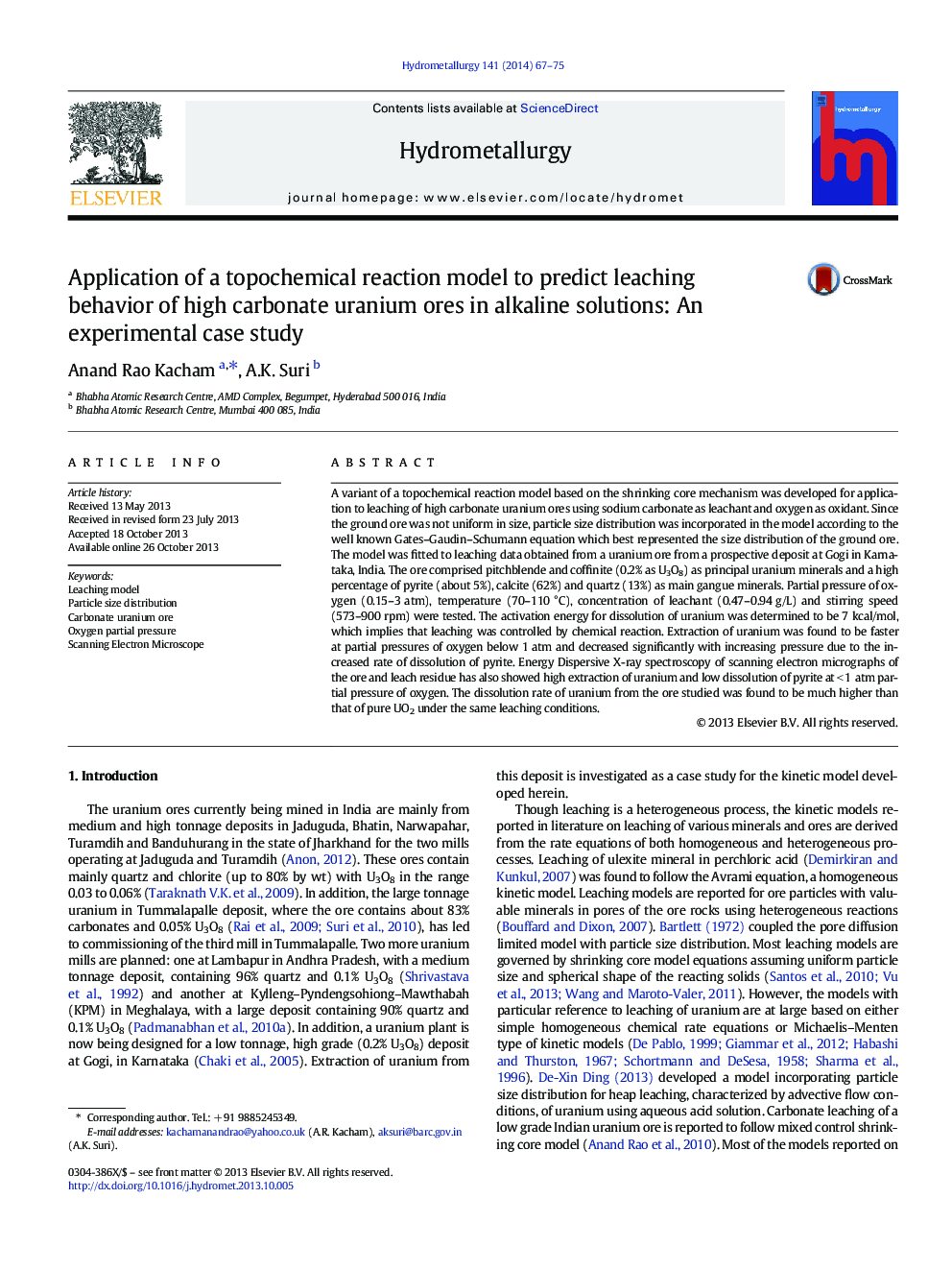| Article ID | Journal | Published Year | Pages | File Type |
|---|---|---|---|---|
| 212275 | Hydrometallurgy | 2014 | 9 Pages |
•Topochemical leaching model developed incorporating particle size distribution.•Model verified with alkaline leaching experiments on a uranium ore.•Leaching of uranium is >90% and of pyrite is <40% at O2 pressures <1 atm at 900°C.•Scanning electron micrographs showed extent of leaching of pitchblende and pyrite.•Rates of extraction of uranium from Gogi ore is much higher than from pure UO2.
A variant of a topochemical reaction model based on the shrinking core mechanism was developed for application to leaching of high carbonate uranium ores using sodium carbonate as leachant and oxygen as oxidant. Since the ground ore was not uniform in size, particle size distribution was incorporated in the model according to the well known Gates–Gaudin–Schumann equation which best represented the size distribution of the ground ore. The model was fitted to leaching data obtained from a uranium ore from a prospective deposit at Gogi in Karnataka, India. The ore comprised pitchblende and coffinite (0.2% as U3O8) as principal uranium minerals and a high percentage of pyrite (about 5%), calcite (62%) and quartz (13%) as main gangue minerals. Partial pressure of oxygen (0.15–3 atm), temperature (70–110 °C), concentration of leachant (0.47–0.94 g/L) and stirring speed (573–900 rpm) were tested. The activation energy for dissolution of uranium was determined to be 7 kcal/mol, which implies that leaching was controlled by chemical reaction. Extraction of uranium was found to be faster at partial pressures of oxygen below 1 atm and decreased significantly with increasing pressure due to the increased rate of dissolution of pyrite. Energy Dispersive X-ray spectroscopy of scanning electron micrographs of the ore and leach residue has also showed high extraction of uranium and low dissolution of pyrite at < 1 atm partial pressure of oxygen. The dissolution rate of uranium from the ore studied was found to be much higher than that of pure UO2 under the same leaching conditions.
